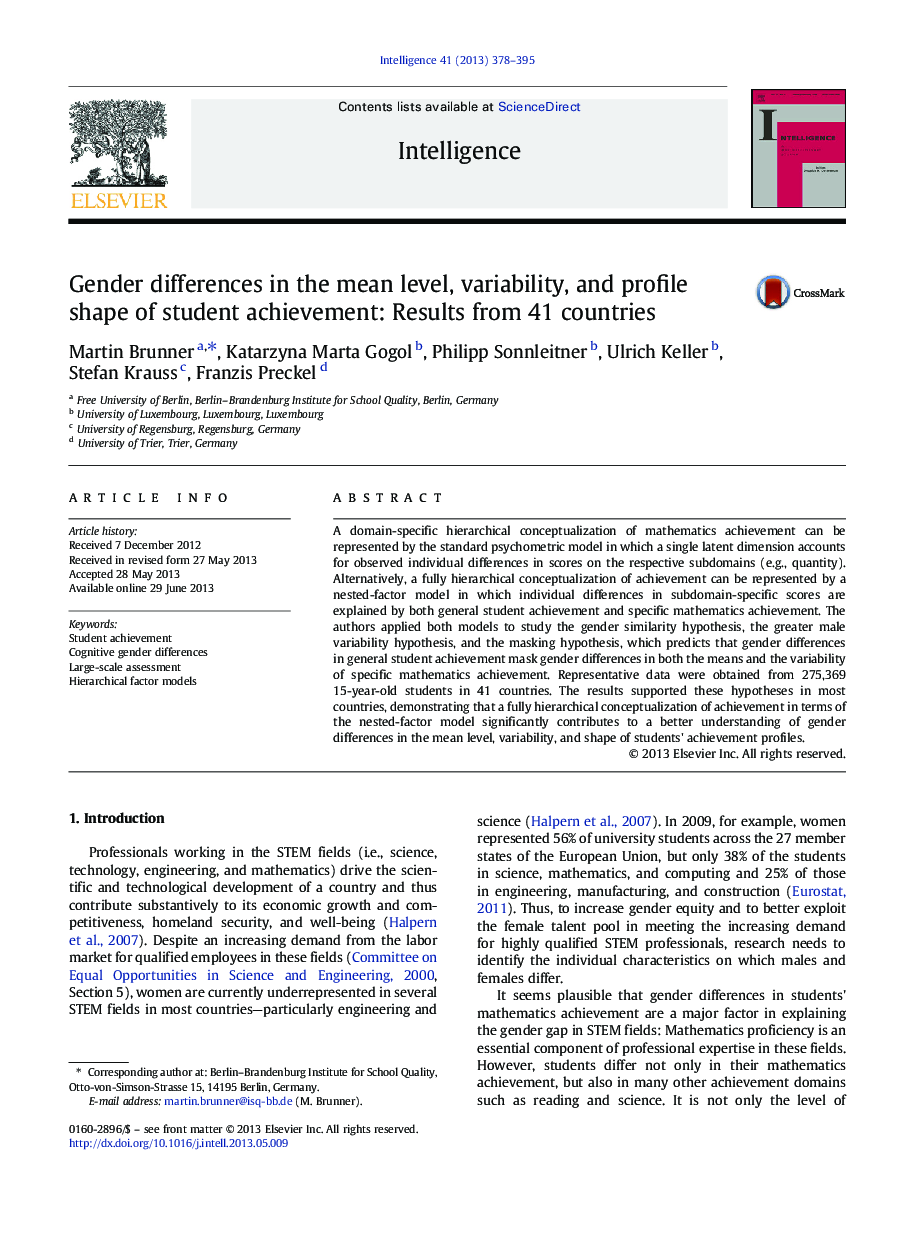| Article ID | Journal | Published Year | Pages | File Type |
|---|---|---|---|---|
| 10459398 | Intelligence | 2013 | 18 Pages |
Abstract
A domain-specific hierarchical conceptualization of mathematics achievement can be represented by the standard psychometric model in which a single latent dimension accounts for observed individual differences in scores on the respective subdomains (e.g., quantity). Alternatively, a fully hierarchical conceptualization of achievement can be represented by a nested-factor model in which individual differences in subdomain-specific scores are explained by both general student achievement and specific mathematics achievement. The authors applied both models to study the gender similarity hypothesis, the greater male variability hypothesis, and the masking hypothesis, which predicts that gender differences in general student achievement mask gender differences in both the means and the variability of specific mathematics achievement. Representative data were obtained from 275,369 15-year-old students in 41 countries. The results supported these hypotheses in most countries, demonstrating that a fully hierarchical conceptualization of achievement in terms of the nested-factor model significantly contributes to a better understanding of gender differences in the mean level, variability, and shape of students' achievement profiles.
Related Topics
Social Sciences and Humanities
Psychology
Experimental and Cognitive Psychology
Authors
Martin Brunner, Katarzyna Marta Gogol, Philipp Sonnleitner, Ulrich Keller, Stefan Krauss, Franzis Preckel,
